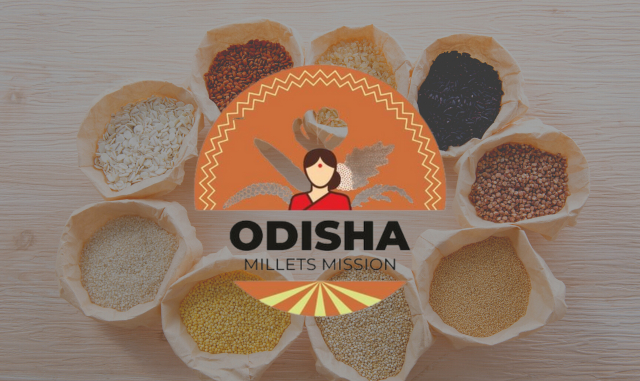Bhubaneswar: As India’s proposal to celebrate 2023 as the International Year of Millets was recognized on the world stage at the United Nations, millets suddenly became a topic of discussion among many nations. While the world only recognized the benefits that millets brought to the table in 2023, the Odisha Millets Mission has been striving continuously since 2017 to usher in a millet revolution in the state of Odisha.
As the largest contributor of millet in Asia, our country plays an unprecedented role in millet farming and sustainable nutritional practices worldwide. Among the highest contributors, Odisha plays an unquestionable role in millet promotion and adoption across the state and the country itself. The Odisha Millets Mission represents a success story for many impoverished farmers in Odisha, who can now sell their yields at higher prices and can afford to make better lifestyle choices for their families. The recent example of International Convention on Millets highlights the key role Odisha plays as a state guiding the county to millet knowledge. With over 190 panellists and close to 2500 farmers from various states attended the convention, where discussions around policy roadmaps, emerging technology and advanced training were seen underway.
With unpredictable climatic conditions and a high population dependent on farming, agricultural practices in Odisha face difficulties year-round. Returning to their roots, the Odisha Millets Mission promotes millet cultivation and addresses food security issues for over 5 million vulnerable households in the state. Millets are resilient to harsh and sudden environmental changes, making them a reliable source of income and nutrients. They can easily withstand elevated CO2 levels and, under certain parameters, can be called the crop of the future.
The Odisha Millets Mission carries the torch for sustainable farming practices. It serves as a model for countries with limited resources and environmental capabilities that are seeking various methods to enhance their nutritional diversity. This model can help these countries reduce their dependency on a few staple crops like wheat or rice while also reducing production costs due to lower fertilizer and other farming support requirements.
In the global battle against malnutrition and famines, initiatives like the Odisha Millets Mission should be duly recognized. Practices such as incentivizing farmers, assisting in the establishment of self-sufficient organizations working for their welfare, and providing necessary training for better yields are among the various methods that the Odisha Millets Mission has introduced in the past few years to ensure the success of this initiative. Several countries struggling with similar issues can take this model as an example and collaborative efforts on a global scale can help mitigate threats like world hunger and malnutrition once and for all.



Comments are closed.